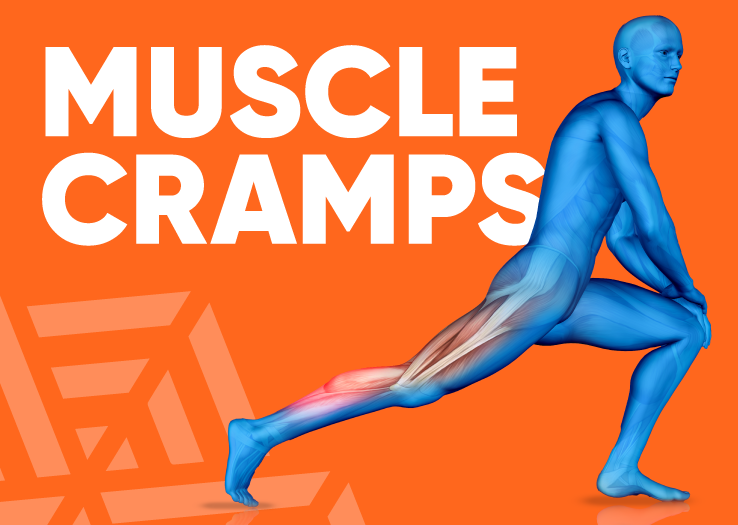Blog

Muscle Cramps
I made a promise to my Elite squad athletes to do some research into muscle cramps. Across all squads, we have spent too long on the side of the pool stretching feet and calf muscles, rolling legs and talking about how two days ago we cramped, and we are still feeling it. So, here’s what the literature reports!
Unfortunately, the answer isn’t simple.
Cramps typically happen in the lower body and can last seconds or minutes (minutes being an awful experience). Bigger cramps have the nickname ‘Charlie Horse’ and can be felt for days after due to the severity of the contracting muscle. The two biggest reasons for a cramp are either loss of fluids through sweat or fatigue of muscles through hard work (contraction of muscle). So how can we prevent them?
Hydration
This, in my opinion, is the biggest factor in limiting the risk of cramping during sessions. Often, I see swimmers bottles out of reach at the end of the pool and not touched during land training sessions. Whilst in the pool it is difficult to understand how much you are sweating, even in the easiest of sessions, you will be losing fluids. In harder sessions, your sweat loss will increase and therefore your rehydration rate should be increased to compensate. It is within these harder sessions that swimmers regularly forget to reach for their bottles, either because the turnarounds are too quick to take a sip or because the intensity of the main set makes the thought of drinking too overwhelming. In either case, you can make this a habit by training yourself to sip on fluids after each repeat. By finding a bottle which is easy to drink from (think easy straw access or squeezy sports cap, requiring no lids to be unscrewed, etc) staying hydrated becomes easier.
Another way to increase the volume of fluids you drink is to make sure you like the taste. If you don’t enjoy water, the amount you drink or make yourself drink will be significantly less than if you enjoy the taste. Try adding a cordial or similar to your water to increase the likelihood of rehydration.
Hydrating throughout the day is also important in helping to prevent cramping during sessions. Hydrating can be thought of as a fuel and under fuelling during the day will inhibit performance in the afternoon/evening sessions. You should be aiming to drink a least 1 litre of fluid across a school day (8hours), this doesn’t need to be purely water. Smoothies, milk, tea, coffee and soda will all contribute to fluid intake.
Electrolytes and Minerals
The second reason why cramping may occur during sessions is a lack of minerals. When we sweat, we lose Magnesium, Calcium, Potassium, Sodium and Chloride. Whilst water has a small dose of these minerals included, an electrolyte tablet or powder sachet has a top up dose specially formulated to replace sweat loss. Many athletes already use these during the warmer months when it is more apparent that sweating occurs, but electrolytes can and should be used all year round. For those with higher sweat rate (if during land you noticeably sweat more than your teammates) it is important that you consume an electrolyte drink earlier in the day during school hours in preparation for training in the afternoon, as well as during the actual training session.
All five minerals mentioned above can also be consumed within your diet. Having a well-balanced diet with a variety of fruits, vegetables, dairy and meat will ensure adequate supplies of minerals are stored in cells and tissues. Making sure you are fuelling well before sessions and after session fuelling for recovering is important. During harder blocks of training or hard weeks, your recovery strategy should be altered to reflect a greater calorie demand and reduced during low-intensity periods, holidays or time off due to injury.
Top Tip: Banana’s contain potassium, calcium and magnesium as well as having a slow release carbohydrate supply for muscles during sessions making this the perfect pre-training snack.
Conditioning
The third reason for muscle cramps is due to a lack of muscle conditioning. With progressive overload of training and a sensible return to sport following any injuries or holiday breaks, conditioning of muscles should be well equipped to handle the training load. However, in some athletes there is the potential for muscle’s to be functioning at a higher rate than they are used to, causing cramping from overuse within a short time frame. This can also be from poor recovery strategies from previous sessions in terms of nutrition, sleep and mobility. A poor warm-up before main sets or training in general (pre-pool) can also contribute to the risk of cramp as muscles are not primed for loading or resistance. For swimmers who cramp more during short-course swimming, it’s typically the repetition of pushing off the wall that causes a calf to cramp. Try adding more skipping to your daily routine to help with your conditioning towards the plyometric nature of a push-off the wall (see previous blog on skipping for additional benefits).
With all three of the above factors being as relevant as the next, it is impossible to pick just one thing as to the reason you are cramping in any one session. Using the information above however can help inform your decision on which element you perhaps need to pay more attention to. Can you feel better before, during and after sessions? Can you hydrate better both during the day and sessions? Can you do a better warm-up to help prime muscles more effectively for hard sets?
I’m hopeful that for those who suffer from cramping regularly, we can find a solution to help keep you in the water 😊

